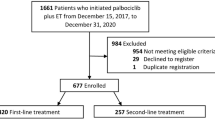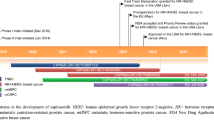Abstract.
Purpose: Although cisplatin is an important agent in non-small-cell lung cancer (NSCLC), de novo resistance is common and acquired resistance emerges rapidly during therapy. Proposed mediators of platinum resistance include the protein kinase C (PKC) signal transduction pathway and associated c-FOS overexpression. While estrogen administration has been reported to upregulate PKC and c-FOS expression, the triphenylethylenes tamoxifen and toremifene potentiate platinum cytotoxicity by inhibition of PKC. Downregulation of c-FOS expression has been reported to result from PKC inhibition. In view of these findings, we hypothesized that toremifene would reverse platinum resistance and that this interaction would be influenced by tumor estrogen receptor (ER) status. Materialsandmethods: A phase II trial of high-dose toremifene (600 mg orally daily on days 1–7) plus cisplatin (50 mg/m2 intravenously on days 4 and 11) every 28 days in NSCLC patients was conducted. A group of 30 patients with metastatic NSCLC who had been previously treated with platinum-based therapy were enrolled. Results: All of the 30 patients were assessable for toxicity and 28 for tumor response. Therapy was well tolerated with minimal hematologic and non-hematologic toxicity. Common toxicity criteria grade 3 hematologic toxicity was seen in only three patients. Five patients achieved a partial response for an overall response rate of 18% (95% CI 6–37). Median overall survival was 8.1 months (95% CI 5.4–17). To assess PKC, ER, and c-Fos expression by immunohistochemistry, 12 informative pretreatment patient tumor specimens were obtained. Four patient tumor specimens were positive for one or both PKC isoforms (α and ε) while c-Fos was overexpressed in three. None of the responding patient tumors exhibited c-FOS or PKC-ε overexpression. ER expression was found to be infrequent (8%), contrasting with previous reports in this tumor type. Conclusion: While this phase II study indicates that high-dose toremifene plus cisplatin is feasible, active, and well tolerated in NSCLC patients previously treated with platinum compounds, the mechanism of action remains unclear. Further study of this regimen is warranted.
Similar content being viewed by others
Author information
Authors and Affiliations
Additional information
Electronic Publication
Rights and permissions
About this article
Cite this article
Lara, P.N., Gandara, D.R., Longmate, J. et al. Activity of high-dose toremifene plus cisplatin in platinum-treated non-small-cell lung cancer: a phase II California Cancer Consortium Trial. Cancer Chemother Pharmacol 48, 22–28 (2001). https://doi.org/10.1007/s002800100293
Received:
Accepted:
Issue Date:
DOI: https://doi.org/10.1007/s002800100293




